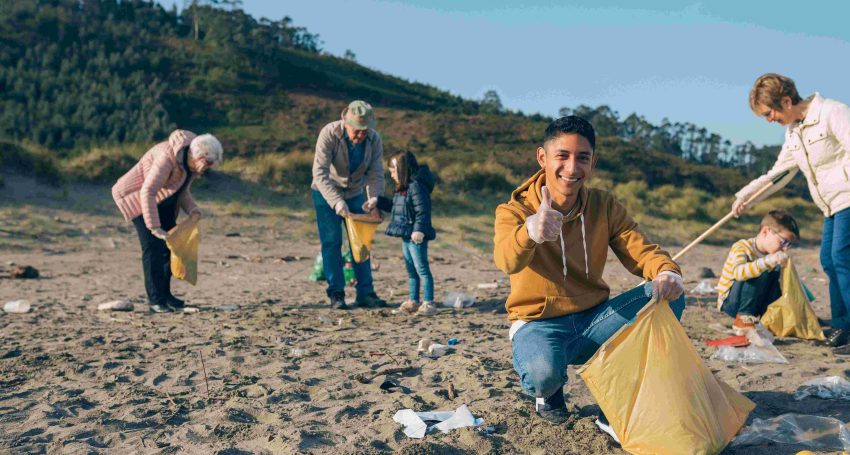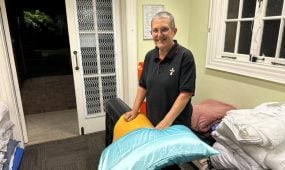What happens to plastic in the ocean?
Justice & Advocacy
“With Plastic Free July currently underway, I was encouraged this month to investigate microplastics in our environment and responsible responses,” says The Rev’d Peter Moore from Angligreen

For some time, I have been concerned about the amount of plastic in the environment and its effects on wildlife and human health.
I have heard about the presence of microplastics in shower gels, moisturisers and cosmetics, but it took some time for me to properly investigate it. I only had a vague understanding of microplastics until I read articles from the Australian Marine Conservation Society and the sustainable living guide Moral Fibres and watched the movie, What Happens to Plastic in the Ocean?, which shows how 99 per cent of the plastic in our oceans are microplastics. With Plastic Free July currently underway, I was encouraged this month to investigate microplastics in our environment and responsible responses.
Advertisement
Microplastics are any type of plastic less than 5mm in length. Sometimes these are visible to the human eye, and other times they are so small they cannot be seen.
They come from a variety of sources. Some are produced for commercial use, such as in the cosmetics industry, while others come from the breaking down of large plastic items, including shopping bags. They are also shed from such things as synthetic clothing when washed, car tyres, fishing nets, and flaking paint on boats. Microplastics are also found in some surprising places, including some sunscreens, teabag adhesive, tin can coating and glitter.
There is no single source, so if we want to reduce the amount of microplastics entering wastewater, rivers and creeks, and ultimately our oceans, we need to be informed and take appropriate steps.
Microplastics are widespread. Faculty of Science and Engineering researchers at Macquarie University took samples of airborne dust from homes where, according to Moral Fibres, it was found that 40 per cent of it was plastic. Microplastic pollution is a global problem that we, as individuals, can address locally by taking the actions I will outline shortly.
Advertisement
Christian vision and mission are shaped by scripture and the application of scripture to the challenges we face in the 21st century. ‘”The earth is the Lord’s” is a Biblical phrase that expresses God’s sovereignty and ownership over the world and all who live in it. This fundamental truth is from Psalm 24.1-2, which states that:
“The earth is the Lord’s and all that is in it,
the world, and those who live in it;
for he has founded it on the seas,
and established it on the rivers.”
By caring for our oceans, and the creeks and rivers that lead to them, we honour God’s good creation. Humans are stewards and not owners of the earth, and we need to respect and honour God’s sovereignty over creation.
The fourth Mark of Mission of our Diocese — “to strive to safeguard the integrity of creation and sustain and renew the life of the Earth” — calls us to consider our choices, including about the steps we can take to value and protect creation.
Related Story
 Features
Features
Plastic pollution is a big problem that we can collectively take small steps to solve
We are yet to know the full environmental impacts of microplastics, so more research is required. However, we do know that our oceans are polluted by huge amounts of plastic, and many sea creatures are dying from ingesting it. If we keep using plastic in the same way as we are now, by 2050 there will be more waste plastic than fish in our oceans by weight. Fish consume microplastic and we then consume fish, and plastic is not good for our health.
Some of the steps we can take include, reducing our plastic use, removing plastic litter when we see it, recycling plastics and seeking products and receptacles made from recycled plastic.
Here are three practical things we can do to reduce microplastics in our oceans:
- In the short term we can significantly reduce single-use plastic items, such as plastic water bottles, shopping bags, straws and utensils, as well as avoid purchasing items that contain microplastics.
- In the medium term, we can lobby our elected leaders, calling for the strengthening of garbage collection and recycling systems to prevent waste from leaking into the environment between the rubbish bins and the landfill and to improve recycling rate.
- In the long term, we can educate ourselves about new developments by scientists and engineers and respond to new developments as they devise ways to break plastic down into its most basic units, so it can be rebuilt into new plastics or other materials.
Editor’s note: Readers are warmly invited to attend the documentary screening of What Happens to Plastic in the Ocean? followed by a discussion in the Darnell Room at St John’s Anglican Cathedral on Tuesday 25 July between 6.30pm and 8.30pm. Please see Cathedral Facebook for more information.
The ACSQ’s first Sustainability Roadmap was launched early this year. The Sustainability Roadmap lays out a framework for the different parts of our Diocesan community to formalise Sustainability Action Plans in a staged rollout.






